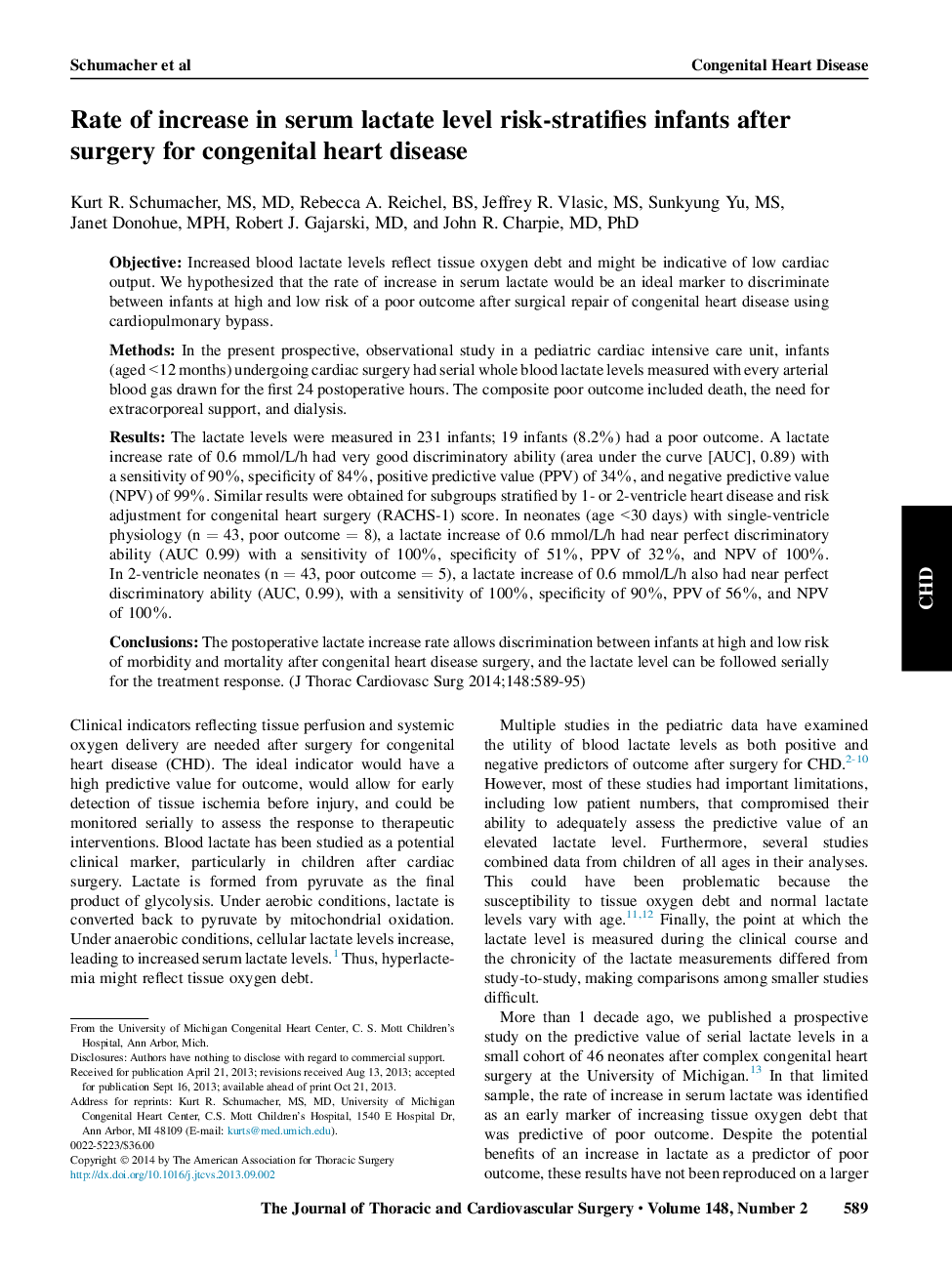| Article ID | Journal | Published Year | Pages | File Type |
|---|---|---|---|---|
| 2980481 | The Journal of Thoracic and Cardiovascular Surgery | 2014 | 7 Pages |
ObjectiveIncreased blood lactate levels reflect tissue oxygen debt and might be indicative of low cardiac output. We hypothesized that the rate of increase in serum lactate would be an ideal marker to discriminate between infants at high and low risk of a poor outcome after surgical repair of congenital heart disease using cardiopulmonary bypass.MethodsIn the present prospective, observational study in a pediatric cardiac intensive care unit, infants (aged <12 months) undergoing cardiac surgery had serial whole blood lactate levels measured with every arterial blood gas drawn for the first 24 postoperative hours. The composite poor outcome included death, the need for extracorporeal support, and dialysis.ResultsThe lactate levels were measured in 231 infants; 19 infants (8.2%) had a poor outcome. A lactate increase rate of 0.6 mmol/L/h had very good discriminatory ability (area under the curve [AUC], 0.89) with a sensitivity of 90%, specificity of 84%, positive predictive value (PPV) of 34%, and negative predictive value (NPV) of 99%. Similar results were obtained for subgroups stratified by 1- or 2-ventricle heart disease and risk adjustment for congenital heart surgery (RACHS-1) score. In neonates (age <30 days) with single-ventricle physiology (n = 43, poor outcome = 8), a lactate increase of 0.6 mmol/L/h had near perfect discriminatory ability (AUC 0.99) with a sensitivity of 100%, specificity of 51%, PPV of 32%, and NPV of 100%. In 2-ventricle neonates (n = 43, poor outcome = 5), a lactate increase of 0.6 mmol/L/h also had near perfect discriminatory ability (AUC, 0.99), with a sensitivity of 100%, specificity of 90%, PPV of 56%, and NPV of 100%.ConclusionsThe postoperative lactate increase rate allows discrimination between infants at high and low risk of morbidity and mortality after congenital heart disease surgery, and the lactate level can be followed serially for the treatment response.
